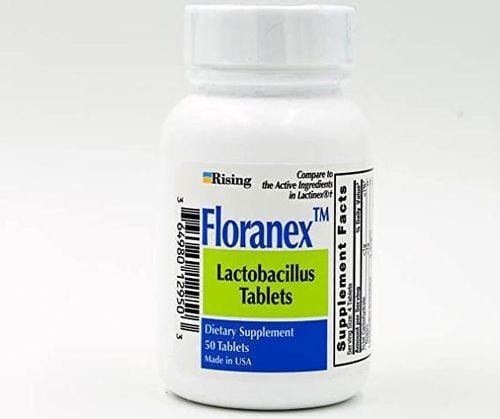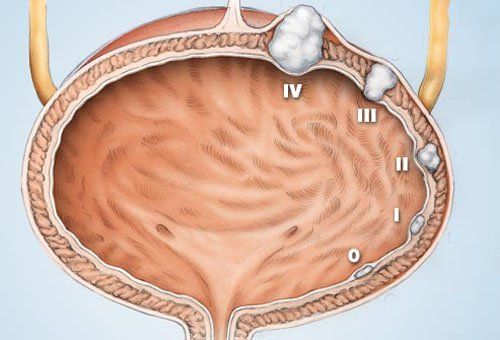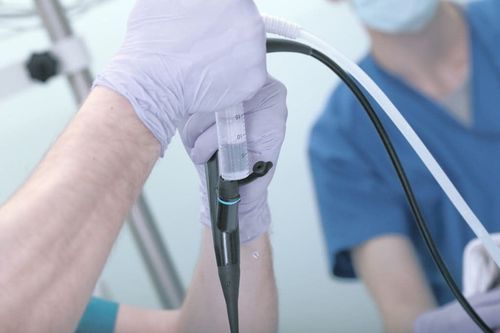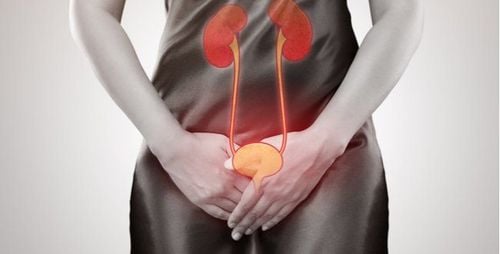This is an automatically translated article.
Urinary tract infection is an infection that can affect different parts of the urinary tract anatomy, including the bladder, urethra or even the kidneys. Most cases of UTIs are easily treated with antibiotics. However, in order to do so, it is important to know what tests you need to do to diagnose UTI early.
1. What is a urinary tract infection?
In principle, urine in the bladder lumen is sterile. This means that the urine does not contain any bacteria or other organisms. However, bacteria can enter the urethra upstream and cause urinary tract infections. Alternatively, bacteria in the blood that reach the kidneys can also adhere, proliferate and cause infection in the kidney, resulting in urinary tract infections.
Thus, UTI is an infection in any part of the urinary system, including the kidneys, ureters, bladder and urethra. In most cases, the infection involves the lower urinary tract, the bladder and urethra.
Urinary tract infections are more common in women and girls than in men. This may be partly due to the fact that the female urethra is shorter and closer to the anus, allowing bacteria from the intestines to make easier contact with the urethra. Meanwhile, men have natural antibacterial substances in the prostate gland, which will reduce the risk of UTIs. Accordingly, cases of urinary tract infections in men need to be investigated for potential urinary tract malformations and obstructions.
Regarding treatment, urinary tract infections will quickly be controlled with appropriate antibiotics. However, in order to have a high treatment effect and to achieve antibiotic sensitivity at an early stage, it is essential to have a diagnostic test for UTIs as soon as possible. Accordingly, the tests for the above purposes will be presented in the following sections.

Viêm đường tiết niệu thường gặp ở trẻ em gái
2. Diagnosing urinary tract infections by what tests?
2.1 Routine urinalysis
The doctor may order a routine urine sample, both for general health purposes and to look for white blood cells, red blood cells or bacteria in the diagnosis of urinary tract infections. urine.
However, to avoid possible specimen contamination and erroneous results, the patient should first be instructed to clean the external genital area thoroughly and to collect urine midstream.
For urinalysis aimed at diagnosing UTIs, the specimen will be evaluated in three ways: visual examination, dipstick examination and microscopic examination. For direct observation, a urinary tract infection can make urine look cloudy instead of clear; red if the infection is causing bleeding. At the same time, the urine sample will also have an unusual odor.
For the dipstick test, a thin plastic rod with a chemical strip is placed in the urine to detect abnormalities. The chemical strips change color if certain substances are present or if their levels are above normal. At this point, the dipstick will show evidence of infection when nitrite or leukocyte esterase - a product of white blood cells - is detected in the urine.
Finally, microscopic examination, when observed white blood cells can be an indirect sign of infection. The presence of bacteria or yeast can indicate a urinary tract infection as a direct sign.
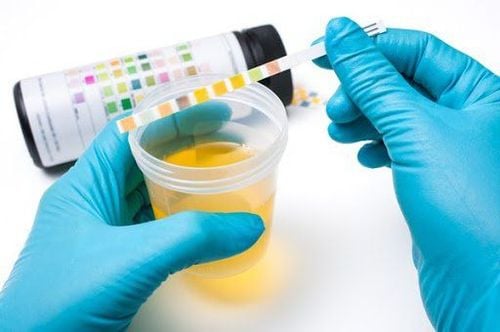
Xét nghiệm nước tiểu chấn đoán viêm nhiễm tiết niệu
2.2 Urine culture test
A urine culture is a test to look for germs in the urine that could be the cause of an infection.
This is considered the “gold standard” for diagnosing urinary tract infections. Urine culture results are usually obtained in 2 to 3 days. However, some bacteria will take longer to successfully culture to avoid false negatives. So results may not be available for several days but through this test the doctor can detect pathogens present in the urinary tract as well as account for the presence of clinical symptoms. related.
Similar to a regular urinalysis, a urine sample is properly collected and a substance that promotes the growth of germs is added. If no bacteria develop, the culture is negative, meaning there is no UTI.
On the contrary, if there is bacteria growth, the culture is positive, the patient has a UTI. Many laboratories define 105 colony-forming units (CFU)/mL of urine as the threshold. However, this threshold misses many associated infections. Therefore, there are other suggestions for diagnosing a urinary tract infection from a count of 103 CFU/mL, depending on the type of bacteria detected.
In the case of a urine sample with a count between 100 and 100,000, this result can be interpreted as an external infection or contamination of the sample. At this point, the patient needs to repeat the standard urine culture procedure. If the germ count is 100 or less, a diagnosis of a urinary tract infection is rarely thought of. However, the patient can still be diagnosed with a urinary tract infection if antibiotics have been taken.
Although the urine culture test does not reveal the site of infection, it also helps to identify the type of germ causing the disease as well as find the right antibiotic to treat the infection. Once there, the next step is to assess the strain's sensitivity to circulating antibiotics to help make treatment decisions. Certain types of bacteria or fungi are resistant to certain antibiotics because of differences in their genetic material. Thus, the choice of antibiotics in the treatment of urinary tract infections in different resistant subjects is different.
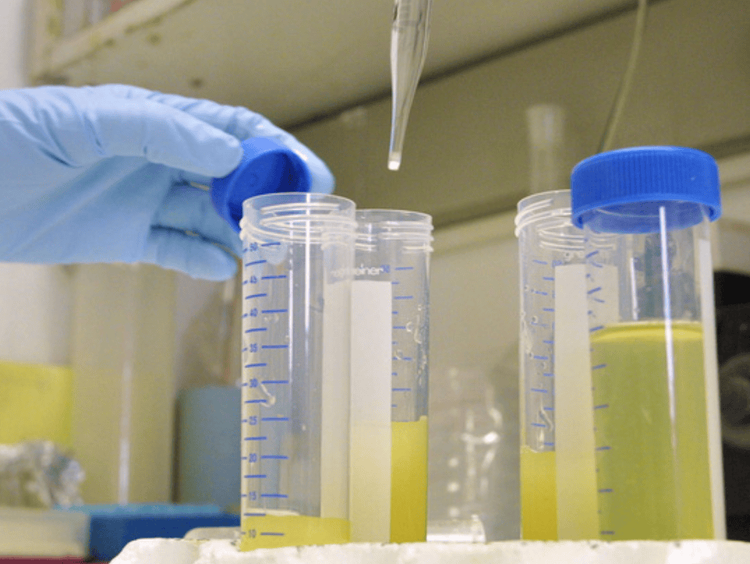
Nuôi cấy nước tiểu giúp tìm ra vi trùng gây bệnh
2.3 Imaging of the urinary system
If frequent urinary tract infections or urinary tract infections occur in subjects with low risk such as men, children... abnormal causes in the urinary tract should be suspected.
At this time, the patient needs to have ultrasound, computed tomography or magnetic resonance imaging of the abdomen and reconstruct the urinary system. Your doctor may also use a contrast dye to highlight structures in your urinary tract.
In case there are structural abnormalities on the urinary system such as the appearance of local or invasive compressive masses, congenital malformations..., the surgical intervention to relieve the obstruction should be considered and indicated. Prevention of recurrent urinary tract infections. On the other hand, imaging modalities of the urinary system also help detect structural damage due to previous frequent urinary tract infections, which may require surgery.
2.4 Cystoscopy
The entire lower urinary tract mucosa, including the bladder and urethra, will be explored by cystoscopy.
This will also be done if you have recurrent UTIs. In it, the doctor will perform a cystoscopy using a long, thin tube with a light source and a camera attached to it to look inside the urethra and bladder. Any lesions on the mucosal surfaces of the urethra and bladder can also be favorable conditions for bacteria to adhere, proliferate and cause disease. Therefore, if these underlying causes are not addressed, the patient will be diagnosed with a urinary tract infection and treated with multiple courses of antibiotics but with poor response.
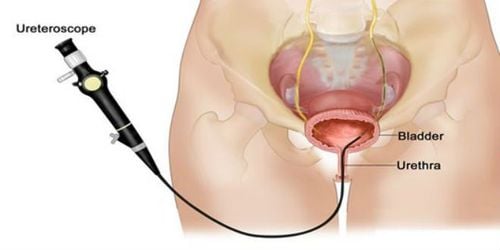
Nội soi bàng quang được áp dụng chẩn đoán bệnh
2.5 Other tests in the diagnosis of urinary tract infections
Similar to infections in other organ systems, the diagnosis of UTI also requires supportive tests, in order to determine the extent of local infection and spread of infection as well as rule out the possibility of superinfection. infection at other sites. In addition, these tests also help doctors evaluate the patient's heart, lung, liver and kidney function, guide drug use and assess drug response.
These tests include a complete blood count, measuring levels of inflammatory protein C, liver enzymes, kidney metabolites,... along with a chest X-ray and an electrocardiogram, Echocardiography in the elderly with a history of cardiovascular disease to prevent the onset of infectious events from UTIs.
In summary, the treatment of urinary tract infections is generally quite simple with the antibiotic tool. However, in cases of recurrent UTIs, the role of diagnostic tests for UTIs becomes very important. Therefore, knowing how to use these tests will contribute to effective treatment as well as prevention in the future.
Customers with suspected signs of urinary tract infection can go to Vinmec International General Hospital for examination and treatment. There is a team of urological surgeons who are well-trained, experienced and professional; with a system of modern equipment, meeting international standards; Professional service quality for high efficiency in diagnosis and treatment.
For detailed advice, please come directly to Vinmec health system or register online HERE.





